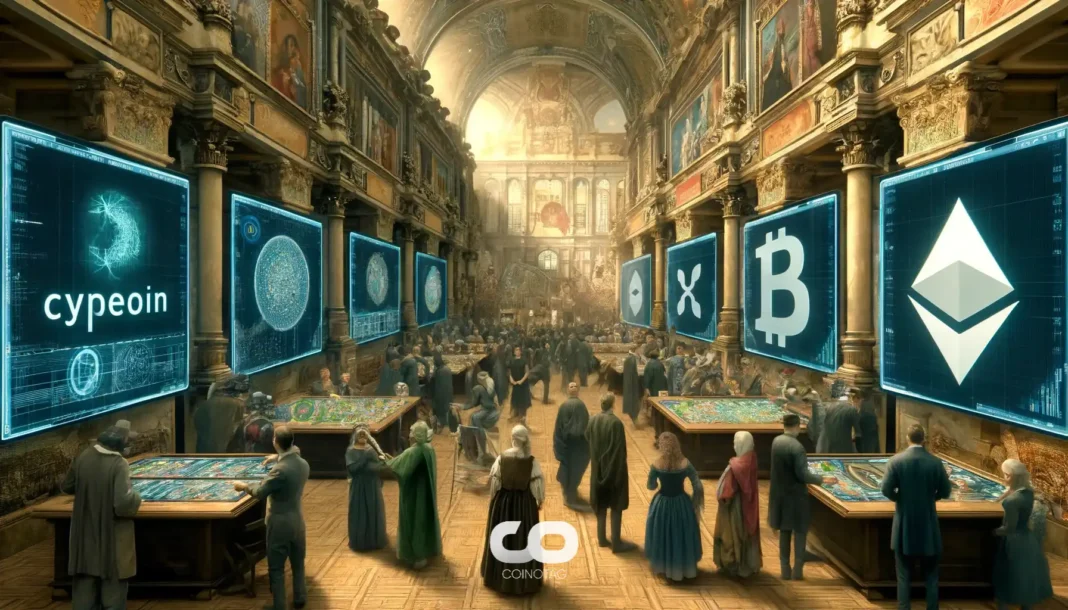-
BlackRock’s Bitcoin ETF has emerged as a dominant force in the cryptocurrency market, commanding over 50% of the total market share even amid recent outflows.
-
This significant milestone underscores the growth and influence of institutional investment in Bitcoin, particularly through ETFs, which was a major catalyst in Bitcoin’s recent price rally.
-
According to Dune data, BlackRock’s iShares Bitcoin Trust ETF now represents an impressive 50.4% market share, holding $56.8 billion worth of Bitcoin despite substantial outflows recorded recently.
This article explores BlackRock’s Bitcoin ETF dominance, its impact on Bitcoin prices, and industry perspectives on current market trends.
BlackRock’s Dominance: A Game Changer in Bitcoin ETFs
BlackRock’s recent achievement in controlling over 50% of the Bitcoin ETF market signifies a major shift in investment patterns within the cryptocurrency landscape. The rise of the iShares Bitcoin Trust ETF (IBIT) demonstrates investor confidence and the growing acceptance of Bitcoin as a viable asset class. With over $56.8 billion in assets, BlackRock’s substantial market presence plays a critical role in shaping market dynamics and fostering institutional participation.
Recent Outflows: An Industry Perspective
Despite BlackRock’s impressive market share, the overall trend indicates a period of turbulence with cumulative outflows exceeding $364 million in just three days leading up to February 20. Notably, BlackRock’s ETF alone accounted for $112 million of these outflows, raising questions among industry analysts regarding the sustainability of recent price gains. Marcin Kazmierczak, COO of RedStone, highlights that these movements may reflect broader market dynamics rather than just ETF activity:
“This indicates that other forces — such as broader market liquidity, institutional accumulation, or macroeconomic trends — are also at play,” Kazmierczak believes, stressing the multifaceted nature of Bitcoin’s market behavior.
Bitcoin Resilience Amid Selling Pressure
In an interesting turn, Bitcoin’s price has shown considerable resilience against these net outflows, recovering to above $99,300 on February 21. While a near 3% drop has been observed on the monthly chart, Bitcoin appears to be distancing itself from the direct impacts of ETF fluctuations. Analysts suggest that this resilience points to the presence of strong underlying demand that could help stabilize prices, suggesting that ETFs may not be the sole driver of Bitcoin’s trajectory.
Expert Insights: Price Dynamics and Market Sentiment
Industry experts, including Samson Mow, CEO of Jan3, have voiced concerns regarding Bitcoin’s recent price action, which remains range-bound. During a panel discussion at Consensus Hong Kong 2025, Mow remarked on the seeming “price suppression” that has characterized Bitcoin’s trading patterns:
“If you look at the price movement, we peak, and then we stay steady and chop sideways. And it’s good, you can say it’s consolidation, but it just looks very manufactured,” Mow asserted, bringing forth a critical viewpoint regarding market manipulation and its effects on investor sentiment.
The Broader Market Context: Institutional and Macro Factors
The future of Bitcoin is closely tied to the interplay of institutional investments and macroeconomic factors. As Bitcoin’s price stabilizes below key resistance levels, analysts are keenly watching for indications of institutional buying or selling that could shift market momentum once again. Analysts also emphasize the importance of broader liquidity—not confined to ETFs—in determining Bitcoin’s price direction moving forward.
Conclusion
As BlackRock solidifies its position at the forefront of Bitcoin ETF investment, the broader implications for the cryptocurrency market remain to be seen. Institutional adoption is likely to continue shaping the landscape, despite recent outflows and price fluctuations. Investors should remain vigilant and informed about not just ETF activities, but also the underlying market dynamics that influence Bitcoin’s price and broader acceptance.





